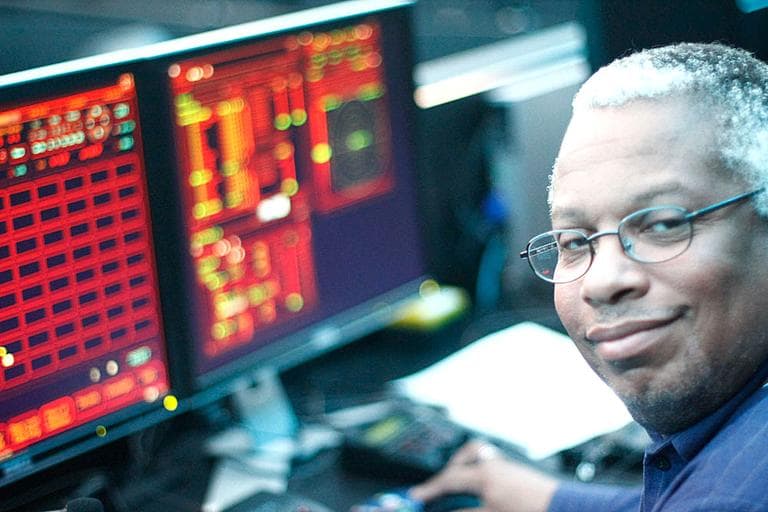Advertisement
Museum's 'Death Star' Powers New Planetarium
BOSTON — This weekend the Museum of Science unveils the new $9 million Charles Hayden Planetarium. It's being billed as the most technologically advanced digital theater in New England. I recently got a sneak peak inside — a chance to go where few reporters have ever gone before.
Science fiction has taken us into deep space for decades. Now, it's the museum's turn. The old, 1961 Hayden Planetarium has hyper-jumped with a room full of slick, new high-tech devices. Beneath the planetarium’s 57-foot dome, Systems Coordinator Daryl Davis introduced me to a large, chunky black orb in the center of the room. He gave it a nickname — inspired by Darth Vadar's command station.
"Some people thought it looked like a landmine,” he recalled. “To me, I’m a big sci-fi fan, so it looked like the Death Star.”
Its real name is the Zeiss Starmaster Projector.
"And it projects over 9,000 stars,” Davis said. "Each one of those points is a fiber that projects a star onto the dome. It’s a lot better than the projector we had before.”

It should be better, with a price tag of $2 million! There's only one other like it in the country. Davis admits the previous projectors were so old he couldn’t find replacement parts. But now, he exclaimed, “We have the best sky in Boston!”
And it is stunning. Easy to get lost in. Thousands of stars twinkled before our eyes.
Next Davis sat down at a 10-foot-wide control console and fired up the DigitalSky system and database. It holds an enormous amount of astronomical information, so it took a second to get going.
"Someone else was flying this before,” Davis joked. But he was half-serious. Then he loaded up the "universe data set" so, he said, "we can take a quick trip jaunt to the moon."
Looking up we lifted off our planet and rose rapidly into space.
“Do you feel like an astronaut?” I asked.
Advertisement
"Ah, more like a star pilot,” Davis said with a little laugh.
If Daryl Davis is the museum’s “star pilot,” David Rabkin could be called the “captain.” He’s the planetarium director.
"As educators in the old planetarium, we were always stuck on earth,” he said. “With the new systems we now become able to fly faster than light, which is really a cool concept.”
"As educators in the old planetarium, we were always stuck on earth. With the new systems we now become able to fly faster than light."
David Rabkin, Charles Hayden Planetarium director
The star pilot took us zipping past planets, moons, star clusters, into distant galaxies. Through space and time.
But that’s not all. The museum team also produced a new cinematic voyage to really send audiences into orbit. It’s called “Undiscovered Worlds” and it premieres this Sunday.
High-definition video, dramatic animation and booming digital sound bring all of the hard data in the planetarium’s new information system to life.
The 30-minute show is about exoplanets, or planets that orbit stars outside our solar system. Exoplanets are Prof. David Charbonneau’s specialty. He works at the Harvard Smithsonian Center for Astrophysics and is one of the hundreds of researchers in the Boston area who’ve dedicated their lives to exploring the mysteries of deep space. Charbonneau advised the planetarium team on its new astronomy show and says when he first saw their interpretation of exoplanet Kiro 7B, he was floored.
“We zoomed into the surface, you could see the molten lava and rocks and volcanoes, and of course all of that is valid, right? It is, as it turns out, it's a really hot planet, there's reason to think it could be volcanically active," Charbonneau said. "That's where we want to go, that's what we're after!”
Then Dani LeBlanc, the planetarium's show producer, projected that very scene up onto the dome. The canvas is massive, and Kiro 7B's awesomeness filled the space above us. An original film score and the authoritative voice of a female narrator blared through the room's pristine sound system. Charbonneau gasped, “Wow!" as we panned across the gnarled surface of the planet, adding, “It does not look like a friendly place — but it certainly looks like an interesting place!”
To me it looked a little like hell. Or Dante’s Inferno. Charbonneau agreed.
While the researcher (and fact-checker) is clearly excited, Charbonneau said the planetarium’s new systems are also scientifically important. The immense database of celestial bodies will be updated constantly. New discoveries are being made all of the time — just last week NASA released a trove of fresh data on exoplanets discovered by the Kepler Space Telescope. Charboonneau’s on that team, too. Now the professor said the Museum of Science is on the cutting edge with this new planetarium, "leading the pack" among the world's planetaria with its topical, immersive astronomy show.
I’ll admit, looking up at the cosmos in the new planetarium has the power to make a human feel really small. Charbonneau sympathized.
“You do feel small initially because you look up at this sky that’s full of stars,” he said. “But then you make this connection because you can zoom in on one of the stars and see the planets around it and understand that out there in space there might be planets, there might even be planetaria where folks are doing the same thing, looking back at us.”
Life on other planets — science fiction or science fact? That, of course, is the biggest cosmic question of all. Perhaps someday a hard answer will play out before our eyes on the dome of the Charles Hayden Planetarium.
